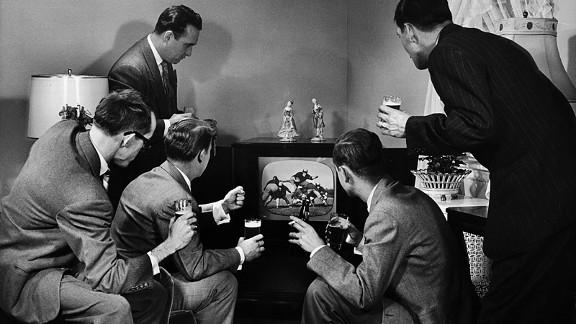Two Lives
 Libby Fischer Hellmann, whose latest novel is Nobody's Child, recommended I see the movie Two Lives, which was on Netflix. And she was right; I can't stop thinking about it.
Libby Fischer Hellmann, whose latest novel is Nobody's Child, recommended I see the movie Two Lives, which was on Netflix. And she was right; I can't stop thinking about it.A little background first. You all know that just one element of Nazi lunacy was their conviction that "Aryans" were superior and that the key to Germany's future was to make a lot more of them. (And have a whole lot fewer of non-Aryans, but that's another story.) Germans were exhorted to have loads of children, and not being married was not a big deal.
The SS founded the Lebensborn movement in Germany and some of its conquered countries, and encouraged women to have racially pure (as they saw it) children in Lebensborn hospitals. The babies would then usually go to a Lebensborn facility and be adopted by selected families, often SS families, in Germany.
There were more Lebensborn children born in Norway than any other country, including Germany. Many of these children were born as a result of romances between Norwegian women and occupying German soldiers. Women in Norway who agreed to allow their children to be adopted didn't realize that they would be sent to Germany.
 After World War II, the Norwegian government tried to repatriate the children to Norway, but they weren't entirely successful. This was also a hugely complicated matter, because in the aftermath of the war, women who had had relationships with German soldiers were scorned; thousands were actually arrested as collaborators and often physically attacked. Their children were also frequently mistreated by neighbors and in school.
After World War II, the Norwegian government tried to repatriate the children to Norway, but they weren't entirely successful. This was also a hugely complicated matter, because in the aftermath of the war, women who had had relationships with German soldiers were scorned; thousands were actually arrested as collaborators and often physically attacked. Their children were also frequently mistreated by neighbors and in school.Two Lives is set mostly in Bergen, Norway, in 1990. Katrine Myrdal lives on the coast in a four-generation house. Katrine's daughter, Anne, is a law student with a baby, and Katrine's mother, Åsa Evensen, has come to live in the house temporarily to help out with the baby. The only man in the house is Bjarte Myrdal, Katrine's husband. Judging from his work attire of a blue double-breasted uniform with loads of gold braid, he's a high-ranking officer in Norway's navy.
It looks like a good life in Bergen. The family is loving, Katrine has an interesting-looking creative job, and she spends some time early every morning sea kayaking in the bay. Into this idyll comes a crusading young lawyer, Sven Solbach. Sven has come to talk to Katrine and Åsa, because Åsa's love affair during the war with a German soldier resulted in Katrine, who was sent to Germany soon after her birth.
Sven wants Åsa and Katrine to be his splashiest clients in a human-rights lawsuit complaining of the treatment of war children and their mothers. He thinks the time is right because, in this year after the fall of the Berlin Wall, Lebensborn facility records from East Germany are now coming available. And Åsa and Katrine have a particularly compelling story, because Katrine was reunited with her mother as a young woman, years after the war's end. She managed to escape East Germany by stealing a rowboat and pushing off from the coast in bad weather. Only after passing out from hypothermia and exhaustion was she rescued by Danish fishermen.
Katrine just wants Sven to go away, but Anne is interested. As a law student, she finds it an interesting case, and of course it's a fascinating part of her family history. Sven's a good-looking guy, too, which doesn't hurt. In quick flashbacks, we learn that there is a mystery about Kristine; something that she doesn't want anyone, including her family, to know about. As the flashbacks go on, we learn just what that is and the film becomes a tense thriller.
I can't say much more without being spoiler-y. I'll just say that the end titles to the film reveal some shocking historical facts behind this compelling story.
I can't stop thinking about the film, not just because it's a gripping thriller, but because the crisis for Katrine and her family is such a human one, even though it's based on a sensational history. Juliane Köhler, who plays Katrine, is tremendously talented, but the real scene stealer is Liv Ullmann, as her mother, Åsa. Nobody can do so much without a word, and Ullmann's face in her entirely silent final scene will break your heart more thoroughly than the most eloquent words ever could.
The Mysteries of Laura
 Last month, we had an old friend visiting, and one evening we decided to try out the first episode of the new series, The Mysteries of Laura, starring Deborah Messing, of Will and Grace fame. The first episode was more or less of a disaster.
Last month, we had an old friend visiting, and one evening we decided to try out the first episode of the new series, The Mysteries of Laura, starring Deborah Messing, of Will and Grace fame. The first episode was more or less of a disaster.The writers went way over the top to make sure we understood that this Laura character isn't anything like any of the characters Messing has played in the past. Laura is an NYPD homicide detective, the best in her precinct. And a good thing, too, because she's out of control in every other way. She's a complete slob (says I, as I sit here in my ancient, fraying track pants, dabbing at the coffee I just dribbled down my front), shoots the ear off a bad guy holding a knife to a bystander when she's too impatient to wait for the hostage negotiators, and she uses police resources to help her find a school and caretakers for her out-of-control twin boys.
When I glanced over at my husband and the friend, they were shaking their heads and looked like they were itching to grab the remote. But I've continued watching, because I kind of like (relate to?) the Laura character and the other cast members, the show can be comical, there are some very interesting NYC location shots, and I'm pretty much of a sucker for police dramas.
The subsequent episodes have been less cartoonish than the first, and the whodunnits fairly interesting, with one major caveat. Each of the first three episodes falls right into one of my TV crime drama whodunnit convention traps, which I described in my "How to Watch TV Crime Dramas" post back in February of 2013. The writers really need to make it just a teensy bit harder for the viewer to figure out whodunnit. If they do, the show may turn out to be a keeper.
How to Get Away with Murder
 I know viewers often have to suspend their disbelief when watching TV, and I'm usually able to do that if I like the cast or if a show has an entertaining comedic or dramatic energy. But there is a limit, and ABC's new How to Get Away with Murder sprinted way past my limit in its first episode.
I know viewers often have to suspend their disbelief when watching TV, and I'm usually able to do that if I like the cast or if a show has an entertaining comedic or dramatic energy. But there is a limit, and ABC's new How to Get Away with Murder sprinted way past my limit in its first episode.The series is set at the very definitely fictional top-tier Middleton Law School. Shiny new first-year law students pack the auditorium for that classic entry-level course, Criminal Law. In strides their professor, the leather-clad, cold-eyed and tough-talking Annalise Keating, played by Oscar winner Viola Davis.
The prof tells the students that they won't be learning theories, case-law principles, analysis or any of that kind of thing. (You know, the stuff they actually do teach in top-tier law schools). No, instead they'll be learning how to get away with murder, the way it's done in a real criminal law practice––like the one she operates in her spare time from teaching. Apparently, the good professor isn't bothered with the need to publish, like most law professors.
Professor Keating also tells her students that they will be competing to help her with actual cases and that the four best competitors will get the chance to work with her in her firm. Excuse me, but didn't I see that plot line in Legally Blonde? It wasn't a problem there, since that was a comedy, but please don't ask me to swallow it in a drama.
Anyway, off we go with law students ruthlessly stomping all over each other in their mad scramble to get this job. Go ahead, skip your other classes (with Professor Keating's encouragement, which I'm sure her colleagues appreciate), use unethical and downright illegal methods to come up with help for her trial. That will be excellent practice for a month from now, when flash-forwards tell us that four of the best and the brightest in the class will have to figure out just how they themselves can get away with a real murder. Oy.
Show creator Shonda Rhimes is legendary for her shows' (Grey's Anatomy and Scandal) gleeful disregard of reality and proportion––but seriously? It's true that a show about the real law school experience would have about as much action as Slow TV, a reality-show phenomenon that made news with a program depicting a seven-hour train trip from a driver's-seat camera, but How to Get Away with Murder goes too far, too fast in the other direction.
Gracepoint
 Just as I expected, Fox Television's remake of the BBC's Broadchurch is lacking in just about everything that made its inspiration work so well. First of all, I don't see the point in even making a show whose every scene and line of dialog is virtually identical to another show. But if the remake is more of a copy made on a low-on-toner printer, it's a complete puzzle.
Just as I expected, Fox Television's remake of the BBC's Broadchurch is lacking in just about everything that made its inspiration work so well. First of all, I don't see the point in even making a show whose every scene and line of dialog is virtually identical to another show. But if the remake is more of a copy made on a low-on-toner printer, it's a complete puzzle.I can't say it any better than this, from Willa Paskin's review in Slate:
Despite imitating the British original in almost every particular, something has been lost in the U.K.-to-U.S. translation. Through seven episodes there is nothing wildly different about the two shows, but Gracepoint has a facsimile's faded quality. Something about it is less sharp, less bright, less keen, and you are left with a washed-out flier you have seen before.
There has been a slight sanding down of nearly every aspect of the original in this American version. Carver and Ellie's personalities, for example, have both been softened. In Broadchurch, Ellie was played by Olivia Colman in a much feistier, funnier, and warmer register than Anna Gunn's interpretation of the character. Gunn's Ellie is upset to have lost a job to Carver, but not that upset. Perhaps that's because Carver (called D.I. Hardy in Broadchurch) is less persnickety: He's still blunt, but he's not quite as socially maladroit. And without the same tension between the two, Gracepoint also lacks some necessary humor––as well as their dueling perspectives on humanity.
When reviewing Broadchurch, I said that I found the show, despite its focus on a child's murder, "spiritually salubrious." I was impressed with the way the secrets uncovered by the detectives, unsettling as some could be, were knotty and specific. The residents of its cozy small town might not be what they seemed, but they weren't all malevolent or vicious––often, they, too, were coping with grief. But somehow this sense of balance––that it is not just evil that lurks in your neighbor's heart, but sadness, resilience, and love, too––is missing from Gracepoint, which really does feel like yet another series about the awfulness lurking beneath the surface of seemingly placid towns.
That's enough about TV crime dramas for now. I'll come back another time to talk about some of the others I've been watching––in between football games.







Thanks for the heads up on Two Lives - just added that one to the queue! I'm enjoying How to Get Away With Murder for all its craziness. I find it at once shockingly beyond the bounds of reality and amusingly entertaining. Although I really don't love the formatting of one central case per episode. I'd rather just get more of the student murderer story!
ReplyDeleteBecky, I can definitely see how somebody could get wrapped up in the unreal Shonda-world of How to Get Away With Murder. I couldn't get into Scandal either because it's so over the top, but I know loads of people are completely enthralled.
ReplyDeleteI hope you enjoy Two Lives. I'm hearing good things about the British series Hinterlands too, and I have that queued up.
Ooh, I will add Hinterlands to the list as well!
ReplyDelete